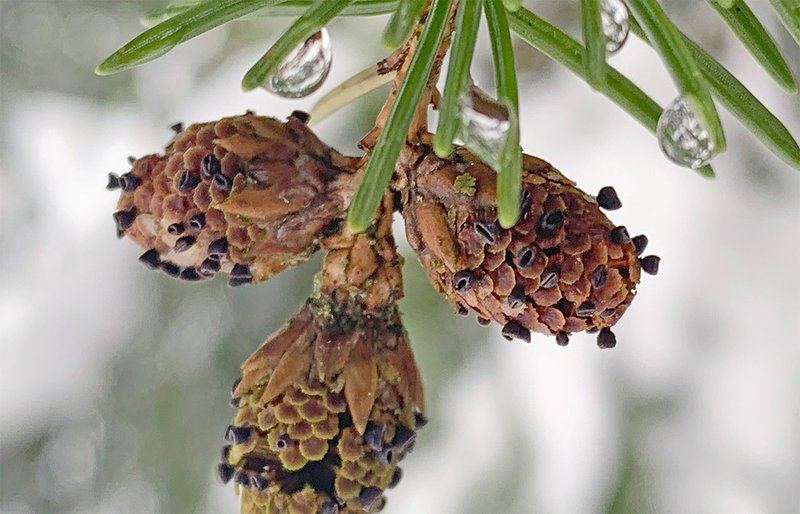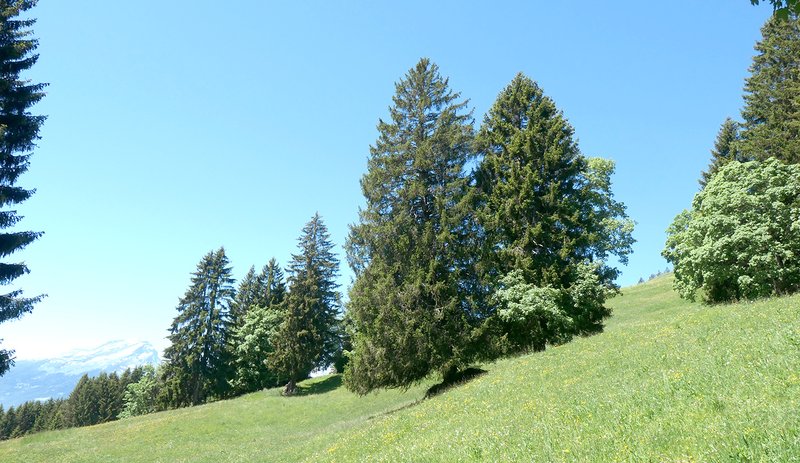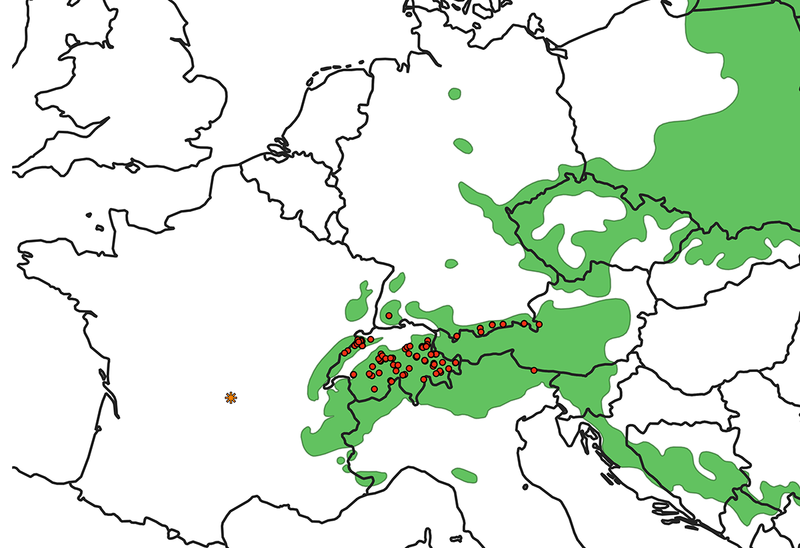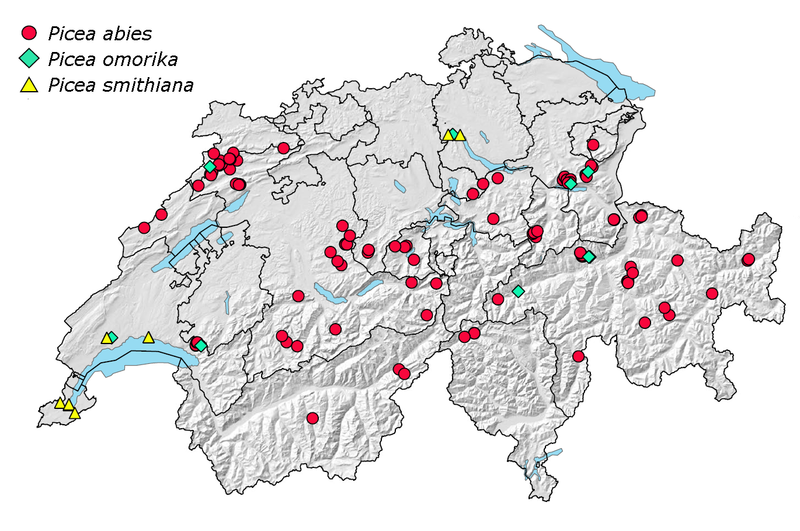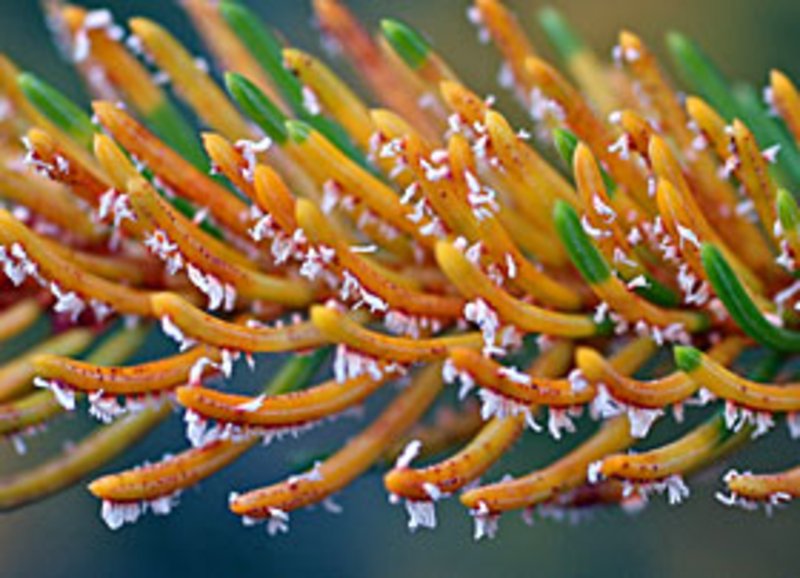Fungi expert Andrin Gross made an extraordinary find in 2018, practically on the doorstep of his office: he saw small, grey-beige cupules on the male flowers of a Himalayan spruce (Picea smithiana) in the arboretum of the Swiss Federal Research Institute WSL. Gross and his colleagues conducted an extensive search in worldwide fungal archives and genetic databases, which did not uncover any similar fungi. That confirmed: this is not only a new species of fungus, but also a new genus.
The researchers christened it Microstrobilinia castrans and now presented it to the scientific community. "It is rare to discover a new fungal genus in Switzerland or even in Europe," says WSL researcher Ludwig Beenken, who specialises in small fungi and is first author of the publication. The species name castrans indicates the unusual way of life of the fungus: it decomposes the tissue of the male flowers and thus gets hold of the nutritious pollen. It does not occur on other parts of the trees.
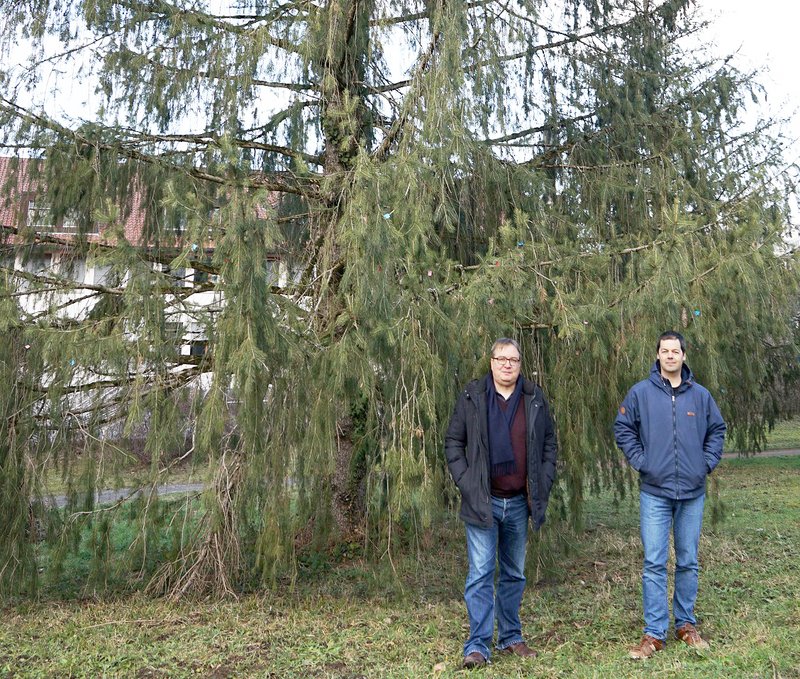
Fig. 1 - The Himalayan spruce in the WSL arboretum in Birmensdorf and the discoverers of the fungus, Ludwig Beenken (left) and Andrin Gross. Photo: Gottardo Pestalozzi (WSL)
After the initial find on the Himalayan spruce, the WSL fungi experts launched a search, with volunteers also helping. "I even searched the spruces along the way during my hiking holidays," says Beenken, who works at the advisory service Swiss Forest Protection. The search operation has now detected the fungus at around 130 sites, both on planted Himalayan spruce and Serbian spruce (Picea omorika) in settlement areas and on native spruce (Picea abies) in forest pastures and mountain forests in the Jura, the Alps and the Black Forest. It has not been found on other spruce species so far.
Introduced or native?
Researchers are still puzzling over the origin of Microstrobilinia castrans, which belongs to the tubular fungi, a large group of fungi that also includes moulds, morels and truffles. Some assume that it has been overlooked so far. Beenken, however, rather suspects that it was introduced with park trees at some point. The main reason he gives is that in the last 200 years, mushrooms have been searched for so assiduously in Europe that such a conspicuous, quite large cup fungus would hardly have remained undiscovered.
Moreover, the Himalayan spruces, of which there are only a few specimens in parks in Switzerland, were all colonised with this fungus. "It may be that the fungus has jumped from this to native spruces, or, if it is native after all, that it has only recently become more widespread - favoured by environmental changes."
What does this discovery of a new fungus mean for the forest? "Forest Protection Switzerland monitors diseases and parasites of forest trees. That's why we want to keep an eye on as many organisms as possible that can damage forest trees," says Beenken. You never know if a fungus will suddenly cause bigger problems, for example if it spreads more widely with global warming. Microstrobilinia castrans, however, does not currently pose a threat to spruce trees, as the fungus only ever attacks a few flowers of a tree.
Scientific original article
Beenken, L.; Stroheker, S.; Dubach, V.; Schlegel, M.; Queloz, V.; Gross, A., 2023: Microstrobilinia castrans, a new genus and species of the Sclerotiniaceae parasitizing pollen cones of Picea spp.. Mycological Progress, 22: 14 (20 pp.). doi: 10.1007/s11557-023-01865-w

